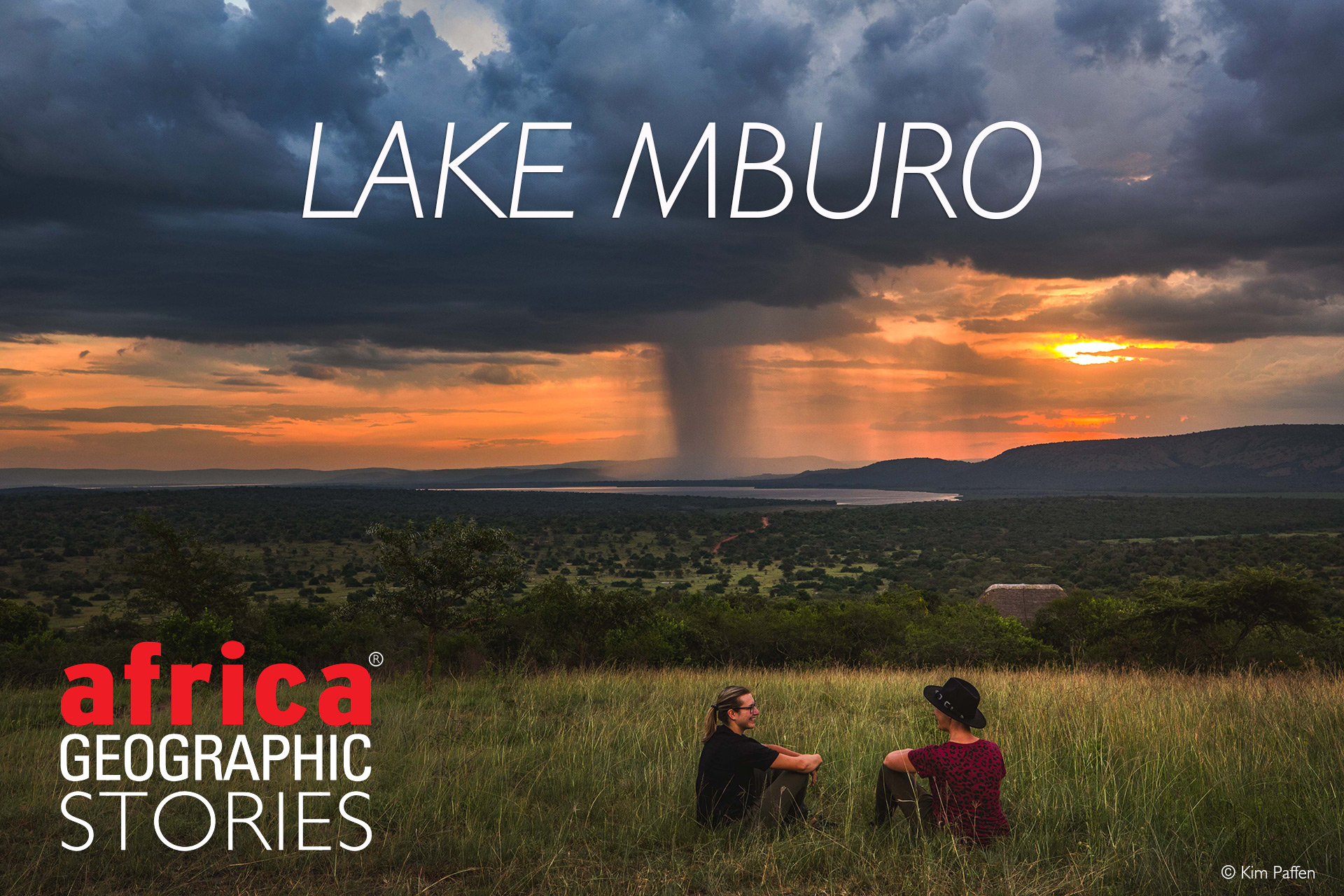
Ugandan savannah teeming with wildlife


Adventurer or birder, serious wildlife spotter or aquafile, or simply seeking that once-in-a-lifetime African safari – Lake Mburo National Park awaits you. Lake Mburo is Uganda’s smallest national park, with an area of just 260 km2, but it packs a punch with its diversity of natural wonders. There’s a little magic for everyone, from lakes to savannah, from giraffes to leopards, from walking to fishing.
The Lake Mburo National Park (Lake Mburo)’s slogan is “whispers of the wild”, and indeed the soughing of wind in the trees and grasses brings peace to the city-worn soul. If one listens carefully, there are other whispers in the wind, voices from bygone eras, from people who have loved the land before.
 Check out Uganda for your next African safari. We have ready-made safaris to choose from – or ask us to build one just for you.
Check out Uganda for your next African safari. We have ready-made safaris to choose from – or ask us to build one just for you.

Cover image courtesy of Kim Paffen.
Lake Mburo’s call of the wild
A visit to the Lake Mburo National Park is often included on safari itineraries because it offers the sweeping vistas of the typical savannah habitat, and it is also the only protected area in the country with impala and Burchell’s zebra. Lake Mburo offers the quintessential African safari experience. One feels that at any moment, Hemingway may join you for a gin and tonic around the campfire.

But Lake Mburo goes one step better. Besides the savannah element, the park is a treasure trove of other habitats, including five lakes and 50km2 of wetlands. The park hosts hills and shrublands, grasslands, seasonal and permanent swamps, rocky outcrops and thickets. With each habitat comes its cast of inhabitants, from birds to otters.

The wild things of Lake Mburo
The birds are the jewels in Lake Mburo’s crown. With over 300 bird species recorded here, many associated with the acacia and water habitats in the park, this is a birder’s dream come true. Birds adorn the trees like Christmas decorations, tiny dots of colour and chirp. Lake Mburo has given many a birdwatcher their first exciting glimpse of the elusive African finfoot with its bright red, big feet or the sighting of the brown-chested lapwing that arrives in November to hang out on the zebra trails.
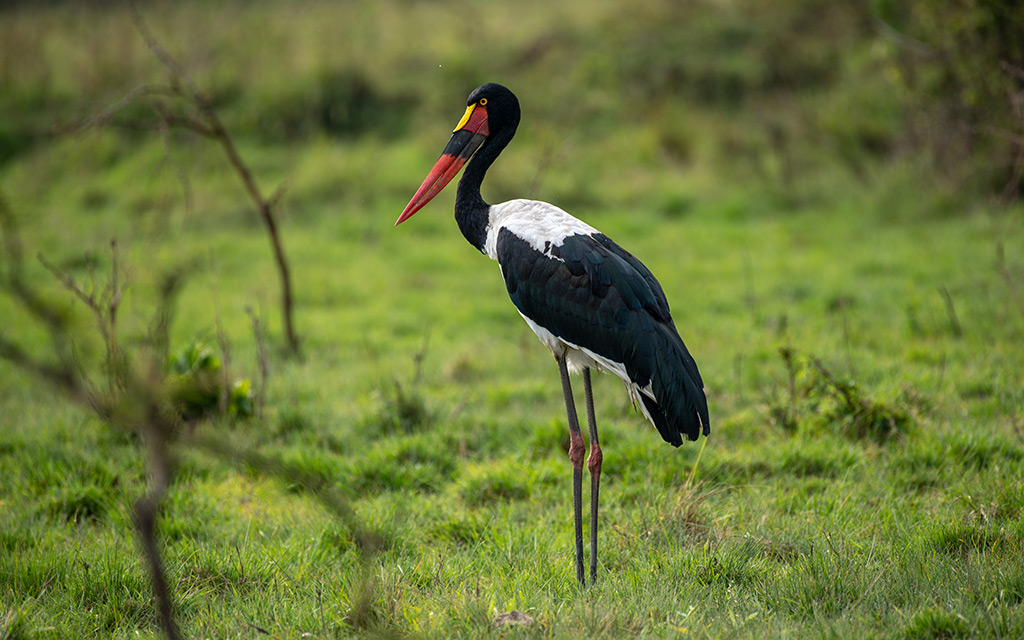
The rasping calls of the near-threatened red-faced barbet will draw you into the woodlands and, in the wetlands, there is the opportunity to watch the giant, solemn-looking shoebill (actually part of the pelican family), standing still and ponderous at the water’s edge. Other bird species with names that roll off the tongue include the green-winged pytilia, papyrus yellow warbler, African paradise flycatcher, black-headed gonolek, rufus-bellied heron and many more. Lake Mburo has the highest concentration of raptors in Uganda (35 species), including the African-Eurasian migrant the African harrier hawk.
The national park is the only one in Uganda with eland, impala and klipspringer. It is also home to the largest zebra population in Uganda – estimated at 5,000 large – and probably contains the highest concentration of leopards found anywhere in Uganda (about 25 in total, according to a recent camera trap study). Other animals that inhabit the park include buffalo, waterbuck, topi, oribi, warthog, reedbuck, hyena, genet, bush pig and white-tailed mongoose. The lakes support about 300 hippos and a heap of Nile crocodiles. Three otter species frolic in the lakes’ waters: Congo clawless, Cape clawless, and the spotted-neck otter.
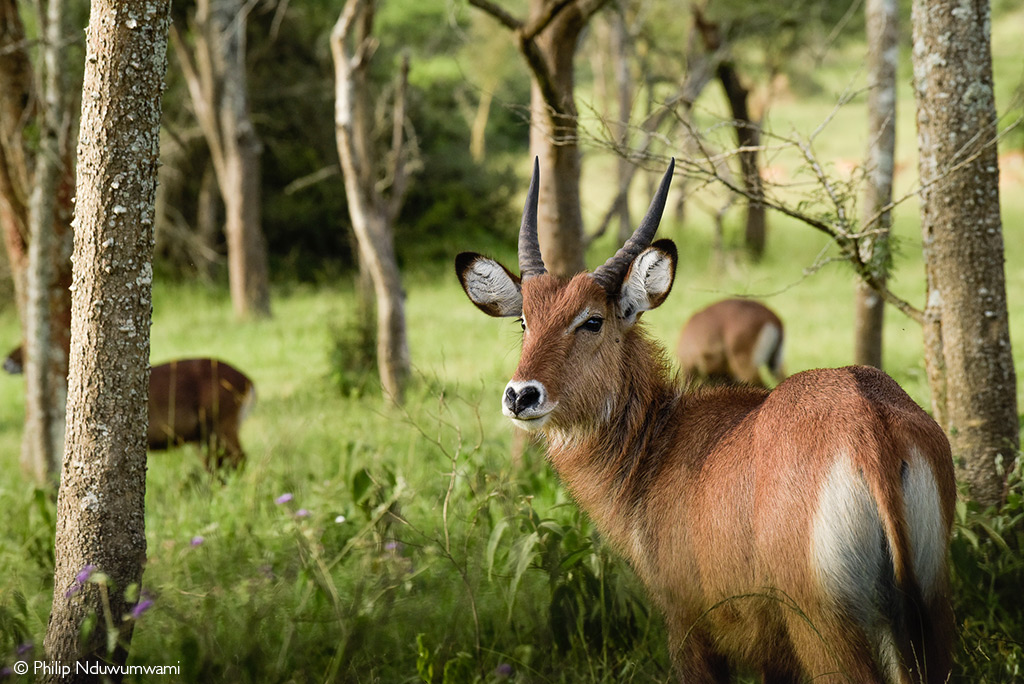


The story of Lake Mburo
Lake Mburo’s history explains why it has remained a sanctuary of wilderness. Before it became a protected area, it was known for the culture of pastoralists who roamed its plains and hills as the “Karo Kurungi” (translated as “beautiful land”). The culture of the Banyankole Bahima people has been instrumental in preserving its beauty. Part of this is that the Bahima believed that the beauty of their Ankole cattle depended on preserving the pastoral beauty of the ancestral lands of Karo Kurungi. Ankole cattle, a breed of Sanga long-horned cattle, are well-adapted to living on sparse forage and minimal water and provide meat and very rich milk. The Bahima believed they had been charged with the care of the Ankole and that their cattle’s success depended on the land remaining beautiful – and thus unfarmed, uncropped and unfenced. This prevented other factions of the Banyankole – the Bahinda and Bairu farming class – from turning Karo Karungi into a production landscape of farms and fences.

As rangeland grazing in the savannah biome is determined by the unpredictable vagaries of sun and rainfall, pastoralists needed to meander far and wide with their cattle. This intermittent grazing, unrestrained by fences, allowed the grasslands to rest and recover after grazing. The cattle grazing also kept the grasslands open from bush encroachment (when acacia tree thickets started to dominate the plains). In essence, the pastoral nature of the Bahima kept the savannah intact.
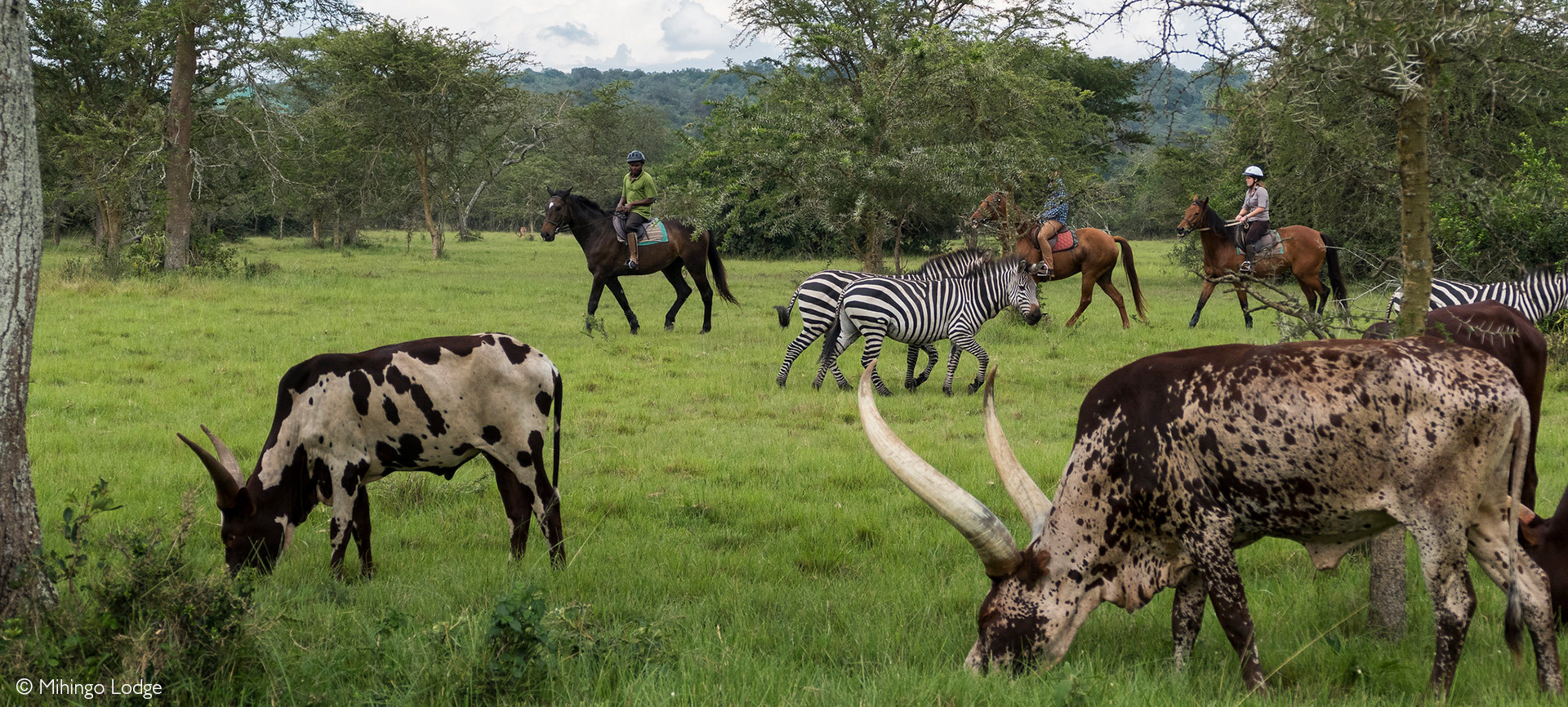
This, however, all went awry when the park was gazetted in 1983, and residents were evicted from the land with little consultation and no compensation. Effectively, the Bahima were abruptly disconnected from their “Beautiful Land” and their pastoralist identity. But the story does not stop there. People in power listened to the story of the Bahima’s Ankole cattle, of how the culture’s values were tied inextricably to the land, and the state reopened the park and degazetted some of the land in 1986. Now, the park is unfenced and managed to include the values of the Banyankole culture as well as the protection of wildlife. As a result, visitors will sometimes see these cattle, stippled with patterns that look like the dapplings of light through the trees, grazing alongside zebra in the park. The park and the people have started a new journey together, which is why Lake Mburo is so special. It is one of the few places left that reflects Africa’s fenceless, wild, untamed rangelands. It is an oasis amongst the surrounding landscape’s dairy farms and subsistence croplands.
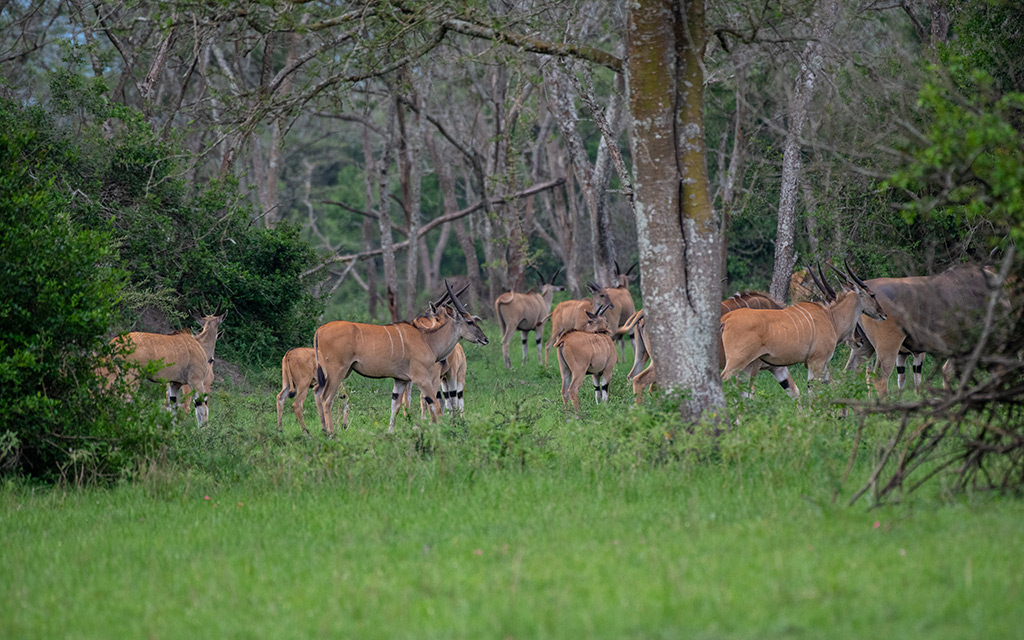
Activities in Lake Mburo
The park offers an array of guided activities – enough to whet the tastebuds of any explorer – from walking and cycling to horseback safaris and game drives. These provide a unique experience of moving amongst the giraffe and zebra in their habitat.
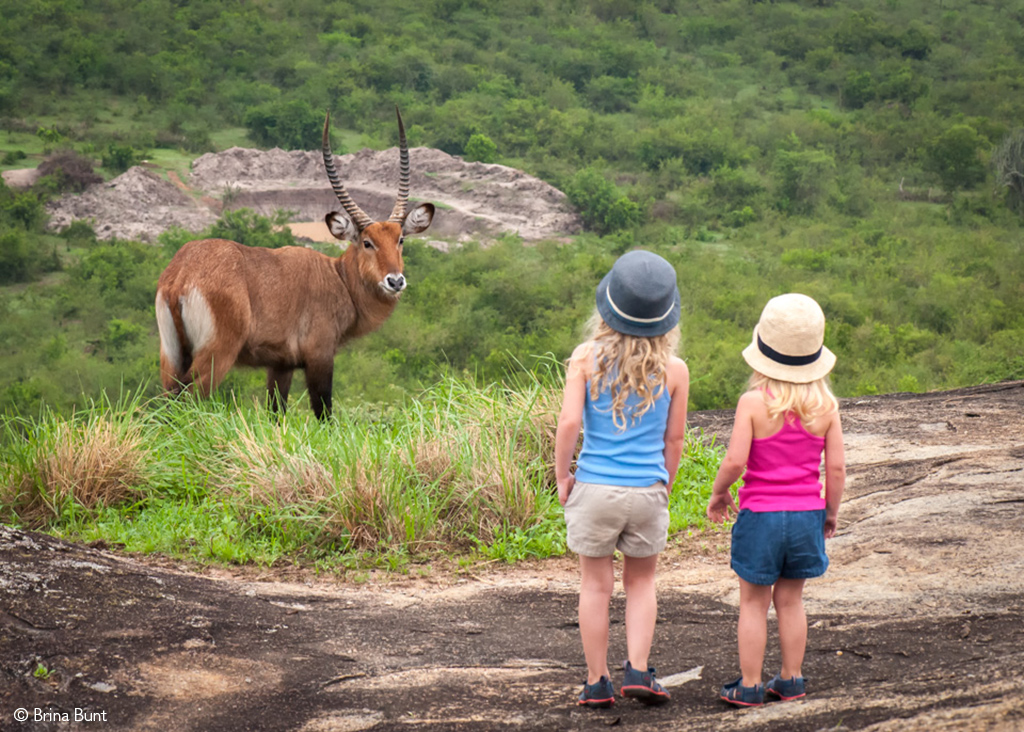
Night game drives can be arranged to increase your chances of seeing night-dwelling creatures, such as bush babies, genet, leopards and porcupines.

Visitors can also take to the water in Lake Mburo on a two-hour boat cruise, which allows the opportunity to watch crocodiles and hippos, hear the iconic call of the African fish eagle and seek out exciting wetland birds. Private cruises can also be arranged. Fishing permits are also issued by the Uganda Wildlife Authority to allow the chance to catch tilapia in the lake.

Explore and stay
Keen on visiting Lake Mburo for your next African safari? The park offers a wide variety of accommodation options available in and outside the park, from affordable camping sites to luxury lodges. It is easily accessible and only a 3-hour drive from Kampala, though there are also chartered flights available from Entebbe International Airport to the airstrip in Mbarara, a 90-minute drive from Lake Mburo.

Lake Mburo NP is often included as a convenient and enjoyable halfway stop point on the long drive between Kampala and Bwindi Impenetrable National Park – popular for its gorilla trekking opportunities.
The park’s annual rainfall and temperatures average 800 mm and 28°C, respectively. The best times to visit are during Lake Mburo’s two dry seasons: December to February and June to August.
If you can visit this “Beautiful Land” with its abundant birdlife, speckled cattle, pronking impala and lissom giraffe, then don’t hold back – Africa’s magic awaits you.
Resources
Read more about the epic birding experiences on offer in Uganda, including in Lake Mburo
To comment on this story: Login (or sign up) to our app here - it's a troll-free safe place 🙂.![]()







